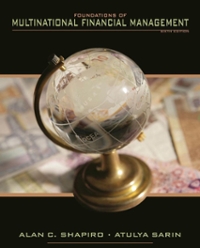As 1992 began, the Russian government and the central bank tightened credit in an attempt to slow
Question:
As 1992 began, the Russian government and the central bank tightened credit in an attempt to slow the growth in the supply of rubles. However, the moves weren’t popular with the country’s giant state-run industrial enterprises, which are still dependent on official subsidies and cheap credit. In July 1992, the Russian Parliament appointed Viktor Gerashchenko head of the central bank. One of his first acts was to say that he didn't think the time was right to make the ruble convertible. Then he said that he would continue to extend credits to bankrupt and inefficient state enterprises.
a. How independent is the Russian central bank likely to be? What political pressures is it facing?
b. What is the likely effect of Mr. Gerashchenko's statements on inflationary expectations in Russia?
c. How do you think the ruble: dollar exchange rate was affected by these statements?
d. In 1995, the Russian Central Bank signed an agreement with the International Monetary Fund not to issue cheap credits to state enterprises. How should the ruble react if the central bank sticks to its agreement with the IMF?
Step by Step Answer:

Foundations Of Multinational Financial Management
ISBN: 9780470128954
6th Edition
Authors: Alan C Shapiro, Atulya Sarin





